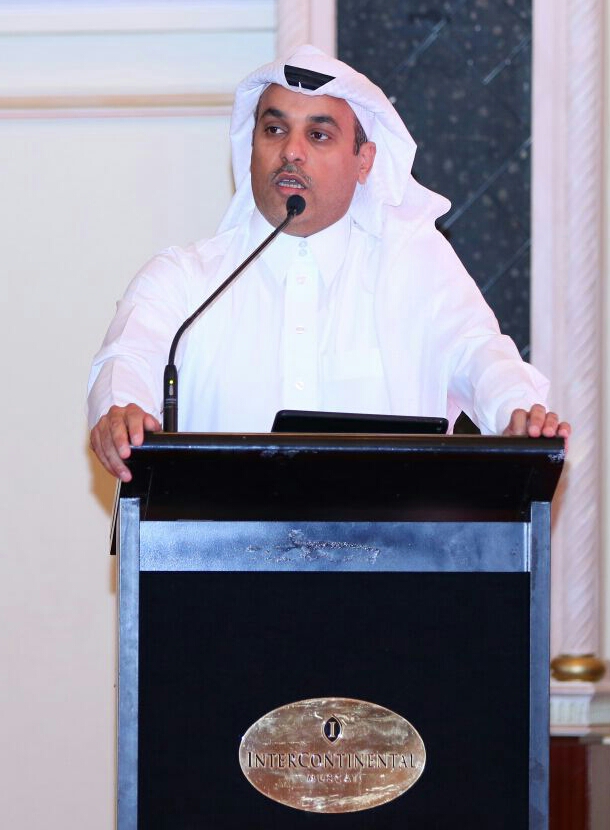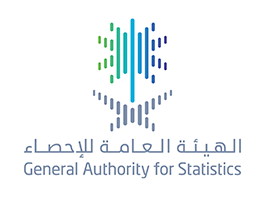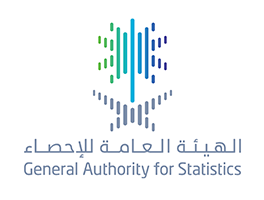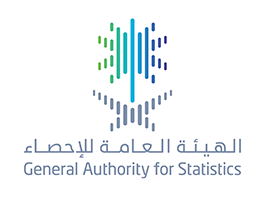
Dr. Altekhaifi : Statistics Support Decisions that will Reduce the Phenomenon of Rising Prices
12-09-2017
The GCC Statistical Centre Launches the General Consumer Prices Index
In pursuit of the Gulf Cooperation Council (GCC) countries to find a number of coordinating and corrective procedural policies that will help in reducing the phenomenon of rising prices in the GCC countries, the GCC Statistical Centre launched the project of "GCC Consumer prices index", and "the statistical centre data portal" in Muscat, Oman, under the auspices of His Excellency Sheikh Khalid Almarhoon, the Minister of Civil services in Oman.
The chairman of the General Authority for statistics in Saudi Arabia, the chairman of the GCC Statistical center in its current cycle, Dr. Fahad bin Sulaiman Altekhaifi, asserted that the index number is considered to be an important tool to support decision makers in all private and public sector entities in GCC countries to prepare coordinating and corrective procedural policies that contributes in reducing the phenomenon of rising prices in the GCC countries. It is also considered to be an economic phenomenon with social dimensions. In addition, the new indicator will provide a unified prices statics data base with all its details, which will help the beneficiaries to use the information in various related fields.
Talking about the statistical centre data portal, Dr. Altekhaifi added that the goal of inaugurating the portal is to enable the observation of statistical data and documenting achieved advancements in the indicators of the GCC countries in different economic, social, and energy sectors. In addition, its goal is to provide information services that contributes in raising statistical awareness.
On the other hand, in the speech of Dr. Altekhaifi, he asserted on developing and supporting the statistical and institutional abilities, to keep pace with the statistical requirements on the GCC countries' level and internationally. He also asserted that this is one of the most important common goals on the strategic level of the GCC countries. He also added that the authorities and Gulf statistical centers are seeking to continuously reinforce and enhance the quality and quantity of statistical services, and develop, expand and market the statistical publishing. Also, it seeks to show the GCC countries' region as a unified social and economic region through unifying the national statistical strategies in the GCC countries with the combined statistical programs needs according to the best international practices. Altekhaifi also explained that everyone is working on building statistical culture and raising statistical awareness, in addition to reinforcing the actual and correct use of statistical data and information in decision making and policy making in GCC countries.
Altekhaifi also revealed about ten of the most important projects that are considered to be the top statistical priority determined by the GCC statistical centre, which are: the national accounts, environment and energy, financial executive statistics, balance of payments, development, progress and sustainability indicators, short term prices and indicators, unified registered population census (year of 2020), foreign trade, administrative data, job market, and the statistical standards, categories, methodologies, and data quality.
It is worth mentioning that the GCC statistical centre was established in September 2011, and its organization was approved in 2012 by the supreme council of the GCC to be the official source of statistical information and data related to GCC countries. It was also established to reinforce statistical and informational work of the national statistical centers and planning in GCC.

"Statistics" worked on six tracks in 90 days....Four Days and the Statistical Sector will Start a New Era
12-09-2017
"Statistics" worked on six tracks in 90 days
Four Days and the Statistical Sector will Start a New Era
Media Center
The Saudi statistical data and information sector is starting a new era after declaring the changing of the central department of statistics to be an authority named" the general authority for statistics". This transforming will start officially on Wednesday 1st of jamad first.
Director of media and statistical awareness department and the spokesman of the authority, Taiseer Almufarij states that working under the umbrella of the general authority for statistics is considered an implementation of the supreme decree number ( 64283) in 26/12/1436 H which declares transforming the central department of statistics to be a general authority called the general authority for statistics. This authority is financially and administratively independent. The supreme decree gave ninety days for the transforming process. The countdown is about to finish now and this Wednesday will be the first official day to work under the new name. Almufarij confirmed that this transforming is not only about changing the name or identity, but changing content, techniques, and mechanisms as the statistical sector must cope with all the rapid changes around it otherwise it cannot go farther. With the increase of commercial transactions, international investments, social and economic changes, mass data revolution , and the development of digital media and portable technologies, it has been a need for the statistical work to go through a vital transforming process in order to satisfy the clients and fulfill their needs which require the authority to establish a mutual partnerships, estimate their current and future needs, unify the information sources, facilitate access to this sources, and provide more advanced statistical products.
Almufarij said that the general authority for statistics is undergoing a transforming plan that has six major tracks: concentration on the client strategy, developing products and services, enhancing methodologies and procedures, upgrading information technologies and infrastructure, statistical literacy and building competences, and structuring all the authority's different tasks and departments in order to keep developing the authority and making it a distinct institution.
It is worth mentioning that the Saudi statistical work has started in a very early era of the Saudi development history. It has started in 1349H /1930 AD and continued for thirty years till the issuance of the general statistics system in royal decree number (23) which made the statistical work a sector that refers technically and administratively back to an official system that cooperated in organizing the statistical sector by setting the rules of relation between the central department as it is the only central department for statistics and the other sectors. This system aimed to activate the statistical work and make it more comprehensive, and raise statistical awareness. During the last fifty eight years, the department worked on many surveys, censuses, and indicators in many different fields in Saudi Arabia.

Dr. Altekhaifi: We aim to unify Data producers' Standards to Serve "GCC" Citizens
12-09-2017
GCC "Energy Statistics" in Riyadh
Dr. Altekhaifi: We aim to unify Data producers' Standards to Serve "GCC" Citizens
Media center- Riyadh
The Chairman of the GCC Statistical center, the Chairman of the General Authority for Statistics in the Kingdom of Saudi Arabia, Dr. Fahad Sulaiman Altekhaifi expressed his thanks and gratitude towards the leaders of the GCC countries for supporting all programs and activities of the "GCC Statistical centre", as a result of their role in supporting all decisions related to the development of GCC nations. Dr. Altekhaifi asserted that the results of the Energy Statistics' Second Regional workshop about the final consumption of energy surveys held in Riyadh city meet the needs of the national and regional policy makers of the energy sector. It will also support everything that would develop the energy sector in GCC countries. Dr. Altekhaifi also added that through this workshop, the GCC statistical centre seeks to strengthen the cooperation between energy statistics producers, and unify the efforts in the used technical standards. In addition, it seeks to implement International standards by all data producers in member countries.
Dr. Altekhaifi revealed that the most important role of data producers in this meeting is to reinforce the understanding of the international standards related to energy statistics in the statistics system. In addition, it aims to explain the links between energy data groups and discuss the user's needs by enhancing the data and its publishing. Moreover, it aims to unify the efforts to raise the awareness about the methodologies needed in preparing energy statistic in the region. Furthermore, it aims to deepen the participants' understanding of international standards that support energy statistics. Also it clarifies the importance of the final consumption surveys' system.
In this workshop the participants reviews the national experiences of the member countries and the importance of the energy final consumption surveys. In addition, the participants visits several energy sector related entities in the kingdom of Saudi Arabia. This workshop continues until 22 March, 2016.
It is worth mentioning that The GCC Statistical Centre was established in June 2011 to provide a common official pool of statistics and data for the member states of the GCC. It was also established to support the statistical work of national statistical centers and planning entities in GCC countries.. The Charter was officially endorsed in December 2012 by the GCC Supreme Council (comprised of heads of member states: United Arab Emirates, Kingdom of Bahrain, Kingdom of Saudi Arabia, Sultanate of Oman, State of Qatar and State of Kuwait).

د. التخيفي : كلمة الملك سلمان رسمتْ خطوط الإدارة الجديدة للتنمية
12-09-2017

The central department director: the transformation into an authority is creating effective partnerships
12-09-2017

GaStat: An Increase in Exports and a Decrease in Merchandise Imports of Saudi Arabia (1st quarter-2017)
27-07-2017
GaStat: An Increase in Exports and a Decrease in Merchandise Imports of Saudi Arabia (1st quarter-2017)
The value of merchandise exports of Saudi Arabia during the first quarter of 2017 amounted to (206984) million riyals compared to (140186) million riyals for the same quarter last year, with an increase of (66799) million riyals (47.7%). While non-oil exports amounted to (44849) million riyals during the first quarter of 2017 compared to (43029) million riyals for the same period last year, with an increase of (1820) million riyals (4.2%). The value of Saudi Arabia's imports during the first quarter decreased by (12.3%) to reach (125558) million riyals with a decrease of (17542) million riyals compared to same quarter last year which recorded (143100) million riyals.
According to the quarterly report issued by GaStat for the first quarter of 2017, the value of Saudi merchandise exports recorded an increase of (5.2%) compared to the last quarter (4th quarter 2016) which recorded (196842) million riyals. While non-oil exports recorded a decrease of (4.5%)compared to the last quarter (4th quarter 2016) which recorded (46964) million riyals. The Saudi imports recorded a decrease of (0,05%) compared to the last quarter which recorded (125616) million riyals. The ratio of non-oil exports to imports reached (35.7%) in the first quarter of 2017 compared to (30.1%) for the same quarter last year, but this percentage was lower than the previous quarter (fourth quarter 2016), which recorded (37.4%).
The report shows that 20.4% of the imports were capital goods, 39.3% intermediate goods and 40.3% imports were goods for final consumption.
The increase in the value of non-oil exports in the first quarter of 2017 compared to the same quarter of last year was the result of the rise of the most important sections of merchandises exported, mainly plastics, rubber and their products, which rose by (9.8%) to the value of (14570) million riyals.
The products of chemical industries and related industries increased to (13355) million riyals compared to (11361) million riyals in the first quarter of 2016, which means an increase of (1993) million riyals (17.5%). Base metals and its products increased to (3703) million riyals Compared to (3636) million riyals in the first quarter of 2016, which means an increase of (66) million riyals (1.8%). The exports of Saudi Arabia in the transport equipment and its parts, machinery, and electrical appliances and equipment section reached (6204) million riyals which form (13.8%) of the Saudi non-oil exports in this period.
Regarding imports, the machinery, electrical appliances and equipment and thereof decreased by (19.3%) to reach (30191) million riyals in the first quarter of 2017 compared to (37397) million riyals in the first quarter of 2016. The imports of transportation equipment and thereof decreased to (20529) million riyals compared to (25377) million riyals (19.1%). While imports of chemical products and related industries decreased by (4.7%) to record (12638) million riyals in the first quarter of 2017 compared to (13268) million riyals for the same period last year.
The report pointed out that the total volume of non-oil exported merchandise increased to (13248) thousand tons in the first quarter of 2017 compared to (13103) thousand tons in the first quarter of 2016, which means an increase of 1.1%. The volume of imports in the first quarter of 2017 also decreased to (17130) thousand tons compared to (20561) thousand tons for the same quarter of last year with a decrease of (16.7%).
On the geographical distribution of Saudi Arabia's exports of non-oil merchandise, the report pointed out that exports to Asian countries, excluding Arab and Islamic countries, are at the top of the groups that have been exported to, recording a rise of (32.1%) to register (14246) in the first quarter of 2017 compared to (10781) million riyals in the first quarter 2016.
Exports to the GCC countries decreased by (4.9%) to reach (11934) million riyals, while the rest of the groups decreased to (5.3%) to register (18669) million riyals.
UAE is the top country for exports in the first quarter of 2017:
The United Arab Emirates, China, India, Singapore and Kuwait are the top countries for exports, as their exports formed (41.7%) of the total non-oil exports compared to (36.6%) in the first quarter of 2016.
China is the top country for imports in the first quarter of 2017:
The United States of America, China, Germany, the United Arab Emirates and Japan are the top countries of imports, as their merchandise imports formed (45.9%) compared to (46%) in the first quarter of 2016.

GaStat Issued the Real Estate Price Index for the 2nd Quarter- 2017
25-07-2017
Based on record data from the Ministry of Justice
GaStat Issued the Real Estate Price Index for the 2nd Quarter- 2017
On Monday 1 Dhu al- Qa’dah, 1438H (July 24, 2017), the General Authority for Statistics (GaStat) issued the Real Estate Price Index in Saudi Arabia, which is based on record data available at the Ministry of Justice about real estate transactions. GaStat described the Real Estate Price Index as an important tool to support stakeholders in making economic and statistical decisions regarding the movements of real estate prices and future forecasts during different periods of time. The index includes three main sectors consisting of several types of real estate: Residential sector consisting of the following types (land, Apartment and house), commercial sector consisting of (land, building, showroom/ store or commercial centre), agricultural sector consisting of one type which is agricultural land.
The Real Estate Price Index showed a decline in real estate prices for the second quarter of 2017, which reached 0.6% compared to the previous quarter (1st quarter 20170) . the index also recorded a decline of 8.6% in the second quarter of 2017 compared to the same quarter last year (2nd quarter 2016).
The report, which was published today, attributed the decline in Real Estate Price Index for the 2nd quarter of 2017 compared to the previous quarter (1st quarter 2017) to the decline witnessed in two of the main sectors comprising the index: the commercial sector 2.2% and the agricultural sector 0.2%, while The housing sector rose 0.2%.
The decline in the Real Estate Price index for the second quarter of 2017 compared to the previous year (second quarter 2016) is the result of the decline in all the main sectors comprising the index: the commercial sector 10.9%, the residential sector 7.9%, the agricultural sector 1.0% .
As part of its duties as an official reference for statistics in Saudi Arabia and as a supervisor and organizer of the statistical sector, the General Authority for Statistics has taken care to monitor the movements of the prices of the constituent units of the real estate sector and monitor the value of their transactions in various regions of the Kingdom and follow the changes that occur from time to time through the statistical product “Real Estate Price Index” which is prepared based on data provided by the Ministry of Justice in this field, within the framework of integration and cooperation between the various governmental bodies aimed at advancing sustainable development in the Kingdom.
This product aims at finding unique real estate indices that measure the performance of real estate market in the Kingdom and fill the data gap in this sector. It is an important tool to support economic decision makers. Its data benefit individuals interested in the economic and statistical analysis of real estate movements and future forecast during different periods of time.

Recommendations
01-06-2017
First: Recommendations to improve efficiency of statistical entities:
Second: Recommendations to improve efficiency of statistical products:
Third: Recommendations to follow up indicators of sustainable development:
Fourth: Recommendations to activate statistics technology use:
Fifth: Recommendations to raise statistical awareness:
Sixth: Recommendations to improve private sector efficiency:
Seventh: Recommendation to develop inter-Gulf statistical work:
